Spring 2022 Quarterly Newsletter
|
Statewide News |
Northern California |
Southern California |
Making Progress on High-Speed Rail
As we approach the halfway mark of 2022, the California High-Speed Rail Authority (Authority) continues to push the nation’s first high-speed rail program forward at high-speed. Construction is happening within 119 miles in the Central Valley, with approximately 1,000 hard-working men and woman on site every day.
Just last week, we submitted two applications totaling nearly $1.3 billion in federal grant funding for California’s high-speed rail project. The applications are the first major push for a continued federal partnership under the newly enacted Bipartisan Infrastructure Law.
The Authority also completed and submitted to the Legislature the 2022 Business Plan, which puts forward a path for us to:
- Deliver an electrified, two-track initial operating segment connecting Merced, Fresno and Bakersfield as soon as possible.
- Invest statewide to advance engineering and design work as every project section is environmentally cleared.
- Leverage new federal and state funds for targeted statewide investments that benefit local service providers and advance high-speed rail in California.
The Authority’s Board of Directors also recently took action on several important items that will position us to explore avenues to advance construction that will ultimately connect the Central Valley with Northern and Southern California when funding becomes available.
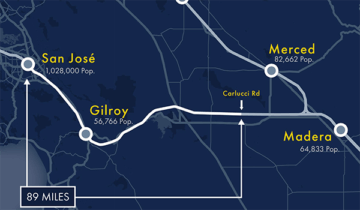
Environmental Clearance to Connect Silicon Valley and Central Valley
In April, the Authority’s Board of Directors certified the Final Environmental Impact Report/Environmental Impact Statement (EIR/EIS) and unanimously approved the approximately 90-mile San Jose to Merced project section in Northern California. This action completed the environmental clearance for nearly 400 miles of the high-speed rail project’s 500-mile Phase 1 alignment and marked the first certification of a project section environmental document in the Northern California region and the first in the San Francisco Bay Area. To read more about this achievement, see the featured story below.
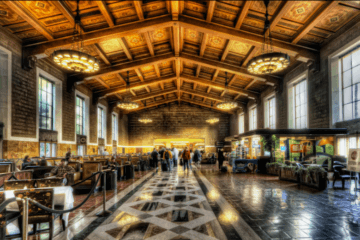
Authority and LA Metro Agree on Funding to Improve Los Angeles Union Station
In April, the California High-Speed Rail Authority Board of Directors approved a multi-million-dollar project management and funding agreement, allowing LA Metro to modernize the historic LA Union Station through the Link Union Station (Link US) project. Stephanie Wiggins, CEO of LA Metro, which approved the same funding agreement in May, applauded the Authority’s $423.335 million commitment and affirmed Metro’s commitment to working closely with the Authority to prepare LA Union Station for high-speed rail service. LA Metro and the Authority will now work to execute the funding agreement soon, with LA Metro returning to its Board in June to seek approval for the contract award. Environmental work is expected to be completed by Summer 2023 with early construction work starting that fall. You can read more about this Southern California milestone below.

Design of Central Valley Stations Moves Forward
There is exciting news for high-speed rail program progression in the Central Valley. In early May, the Authority issued a Request for Qualifications for station design for the high-speed rail stations that will be in Merced, Fresno, King/Tulare, and Bakersfield. Advancing design is key to advancing electrified high-speed rail service by the end of the decade.
Working with the Community to Develop a High-Speed Rail Station in Fresno
The effort to deliver a station site at Fresno has officially launched, with the Authority conducting virtual meetings with multiple Fresno stakeholders late last year. To date, the Authority has hosted several virtual workshops and collected feedback from City of Fresno staff, non-profit organizations, business associations and community advocates. The intent of this outreach is create a station that honors the local preferences of the Fresno community.
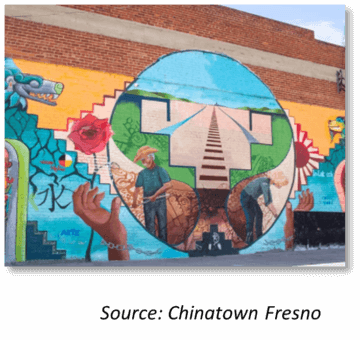 What We’ve Heard So Far
What We’ve Heard So Far
Community members have highlighted the importance of appreciating Fresno’s treasured and unique culture as part of the station design effort. The three key themes were:
- Encourage comfortable and quick pedestrian and bicycle connection between Downtown and Fresno’s Chinatown;
- Highlight Chinatown’s diversity and food culture; and
- Encourage many modes (transit, bikes, scooters, and walking) in the station area and ensure that parking is not a barrier to connectivity and access.
In addition to providing responses to ideas about the station and access, stakeholders also provided suggestions for activities that could benefit the community before high-speed rail train service initiates. Sites where “early activation” (or activities that deliver community benefits today) could occur were an important component of conversations to date. These early activities, many of which will be temporary, depend on local partnerships and community participation for successful implementation. Building activity in the short term helps us keep positive interest in and attention to our station site, stimulates economic activity, and helps build ridership.
On May 27, Authority staff attended the 559 Night Market in Fresno, asking the community what they would like to see by way of early activation as part of the eventual Fresno Station complex.
ICYMI – May Social Media Round-up
In May, the Authority recognized the small businesses that are contributing to building high-speed rail, our construction workers, some of our valued Asian American Pacific Islander team members and Infrastructure Week. We also explored how future high-speed rail stations will be bike-friendly during bike month and celebrated the soft launch of the high-speed rail exhibit at the children’s museum in Merced. To view what we did on social media, check out our Twitter, Facebook and LinkedIn pages.

| NORTHERN CALIFORNIA NEWS |
On the Move with Jessica Zenk
Celebrating National Bike Month, City of San José Department of Transportation Deputy Director Jessica Zenk and Northern California Regional Director Boris Lipkin strapped on their helmets for a bike ride from Diridon Station to City Hall. Along the way, they discussed what high-speed rail means for San José and the future that the City envisions in downtown.
Diridon Station in San José is poised to become one of the busiest intermodal hubs on the West Coast. High-speed rail will be added to Diridon’s existing Caltrain, Altamont Corridor Express (ACE), Capitol Corridor, Amtrak, Santa Clara Valley Transportation Authority (VTA) Light Rail service, and future Bay Area Rapid Transit (BART) service.
Together with partner agencies, the California High-Speed Rail Authority is working to bring high-speed rail service to Diridon Station and to help transform it into a world-class transportation hub that provides a seamless customer experience for movement between transit modes, from bikes to high-speed trains, within the station and into the surrounding neighborhoods in downtown San José. Visit the Diridon Integrated Station Concept Plan website to learn more.
What’s Happening in Northern California
In April, the California High-Speed Rail Authority (Authority) reached a significant milestone with the approval of the San José to Merced project section. Caltrain received its first new electric trains, which will run from San Francisco to San José on newly electrified tracks. And the Authority, along with its partners, applauded the award of a $3 million grant to aid in continued efforts to protect wildlife movement.
Environmental Clearance Completed to Connect Silicon Valley
and the Central Valley
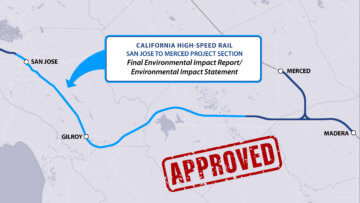 The Authority reached a significant milestone with the first certification of an environmental document in the Northern California region and the first in the San Francisco Bay Area.
The Authority reached a significant milestone with the first certification of an environmental document in the Northern California region and the first in the San Francisco Bay Area.
On April 28, 2022, the Authority’s Board of Directors unanimously certified the Final Environmental Impact Report/Environmental Impact Statement (EIR/EIS) and approved the approximately 90-mile San José to Merced project section.
This project section will connect Silicon Valley to the Central Valley, slashing travel times and improving mobility in both regions. The high-speed rail system will make the trip from San José to Fresno in just one hour, compared to three hours by car today.
This action completes the environmental clearance for nearly 400 miles of the high-speed rail project’s 500-mile Phase 1 alignment from San Francisco to Los Angeles/Anaheim – including a contiguous stretch between Santa Clara County (San José) and Los Angeles County (Palmdale).
In approving this project section, the Authority Board of Directors selected Alternative 4. This alternative modernizes and electrifies the existing rail corridor between San José and Gilroy, allowing for high-speed rail and electrified Caltrain service. The alignment includes more than 15 miles of tunnels east of Gilroy through the Pacheco Pass in the Diablo Mountain Range.
The Board’s certification of the San José to Merced Final EIR/EIS is a critical milestone that moves the project section closer to being “shovel ready” for when pre-construction and construction funding becomes available. Check out the story below to read more about support for the project section.
Caltrain’s New Electric Trains Arrive
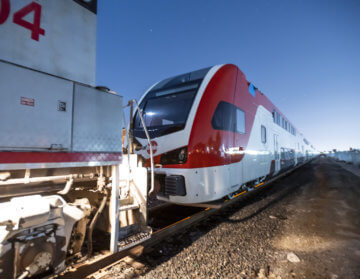 Caltrain received its first new electric trains that will replace the current diesel fleet as part of the Peninsula Corridor Electrification Project (PCEP), which the Authority is helping to fund.
Caltrain received its first new electric trains that will replace the current diesel fleet as part of the Peninsula Corridor Electrification Project (PCEP), which the Authority is helping to fund.
In April, two self-propelled Electrical Multiple-Unit (EMU) trains arrived from a manufacturing facility in Utah. The new Stadler-built EMUs are state-of-the-art vehicles with enhanced amenities that will provide a superior level of service to riders on the Caltrain corridor for many years to come.
The new electric trains will undergo rigorous system testing before passenger service begins.
A retired AEM-7 electric locomotive from Amtrak’s Northeast Corridor arrived in December. The repurposed locomotive will support testing of the overhead catenary system currently under construction.
In addition to reducing diesel emissions by 97% by 2040, the electric trains will improve Caltrain’s system performance, enabling faster and more frequent service, paving the way for the introduction of high-speed trains.
Grant Awarded to Study Pacheco Pass Wildlife Overcrossing
 The Authority, along with partners from Caltrans, the Santa Clara Valley Transportation Authority (VTA) and Pathways for Wildlife, applauded the award of a $3 million grant to aid in continued efforts to protect wildlife movement in Northern California.
The Authority, along with partners from Caltrans, the Santa Clara Valley Transportation Authority (VTA) and Pathways for Wildlife, applauded the award of a $3 million grant to aid in continued efforts to protect wildlife movement in Northern California.
The California Wildlife Conservation Board awarded the grant to the Santa Clara Valley Habitat Agency to fund the planning, design, environmental review and permitting of a proposed wildlife overcrossing across State Route 152 in the Pacheco Pass Region of Santa Clara County.
“This grant aligns with the Authority’s planning efforts to increase wildlife connectivity in the San José to Merced project section,” said Northern California Regional Director Boris Lipkin. “The award reflects the wide range of support and collaboration we’ve had with key partners focused on protecting sensitive habitats, preserving wildlife movement and enhancing the natural environment in the project area.”
In sensitive wildlife areas along the planned high-speed rail corridor, such as Coyote Valley, Pacheco Pass and the Grasslands Ecological Area, the Authority has incorporated project elements to allow for wildlife movement and, in many cases, improvements on current conditions.
Project Section Approval Draws Strong Public Support
For over a decade, the California High-Speed Rail Authority (Authority) worked diligently to complete the environmental clearance process for the San José to Merced project section in Northern California. These efforts resulted in the Authority Board of Directors voting unanimously to certify the Final Environmental Impact Report/Environmental Impact Statement (EIR/EIS) and approve the project section.
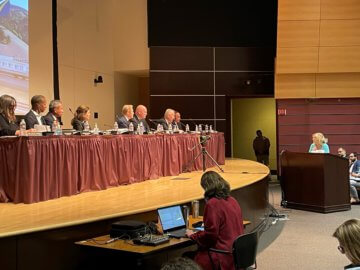 Attendees showed strong support for the approval of the San José to Merced project section at a two-day board meeting in April. Public comments from individuals, organizations and elected officials echoed the necessity to press on and bring high-speed rail service to the region.
Attendees showed strong support for the approval of the San José to Merced project section at a two-day board meeting in April. Public comments from individuals, organizations and elected officials echoed the necessity to press on and bring high-speed rail service to the region.
“I am grateful, as are all of us in the City of San José, for the extraordinary work that’s now culminated in this environmental document reflecting thousands of hours of stakeholder outreach and an enormous amount of environmental analysis,” said San José Mayor Sam Liccardo. “Completion of this critically important high-speed rail project helps the state expand economic opportunity and affordable housing, two critical goals for all of us.”
“Next to San José, Gilroy will be the next most significant transit hub on this stretch,” said Gilroy Mayor Marie Blankley. “Gilroy Transit Center is very much ready for this to happen.”
Others emphasized the benefits of connecting Silicon Valley and the Central Valley with a fast and reliable high-speed rail travel option.
“We now know just how important sustainable transportation like high-speed rail is to our ability to live in this warming world. High-speed rail is fundamentally about changing how we move and grow as a state, adding a new clean way to travel between cities that simply doesn’t exist today,” said SPUR’s Director of Public Programming Noah Christman.
The environmental process required the Authority to work closely with partner agencies and local communities to understand the project’s impact and work together to find mitigations.
“The Authority’s commitment to design, permit and fund a land bridge over SR 152 in Pacheco Pass, in collaboration with other partners, is the crown jewel of this mitigation approach to address habitat fragmentation,” said Santa Clara Valley Habitat Agency Executive Officer Edmund Sullivan. “The Habitat Agency appreciates the Authority’s approach to mitigating for direct and indirect environmental impacts throughout this segment of rail construction and operation.”
These sentiments were shared by U.S. Environmental Protection Agency project manager Jean Prijatel, “We also commend CHSRA for the extensive community outreach that has occurred throughout development of the environmental document for this project section. The Final EIS includes a robust set of proposed improvements to offset adverse effects to minority and low-income communities along the project alignment.”
The Authority has benefited from extensive input from stakeholders and the public in developing this environmental document and looks forward to continued collaboration as we move forward in delivering this transformative project.
Studio Designs Inclusive High-Speed Rail Stations

Frank Fuller, Jane Lin and Heidi Sokolowsky of Urban Field Studio work with cities, government agencies and private clients to help stations areas achieve their greatest potential for a given location.
According to the 2020 census, 86% of Americans live in metropolitan areas. With so many people living in cities, urban design is essential to make most places better.
San Francisco-based urban design firm Urban Field Studio works with cities, government agencies and private clients to capture the greatest potential for a given location. The studio blends architecture, planning, economics, and environmental and social responsibility to design active urban places that people will treasure.
Before forming Urban Field Studio, Heidi Sokolowsky, Jane Lin and Frank Fuller were colleagues at another firm and worked on the Diridon Station Area Plan in San José, a future world-class transportation hub that will include electrified Caltrain, BART and high-speed rail service. Sokolowsky already had prior experience with high-speed rail station area planning in California and Germany.
In 2014, Sokolowsky and Lin saw an opportunity to create a design studio that would be much like a “field office” for urban design. They wanted to explore new ways to practice planning and experiment with ways to engage with the public. “We thought of ourselves as a collaborative, and we would go to people rather than them coming to us,” Sokolowsky said. “Our advantage is that we are small and flexible. We can form teams as needed, whether it’s for a small task or for a longer process.”
The studio’s initial projects included a wayfinding plan to improve the signage in Uptown Oakland near the 19th Street BART Station and a feasibility study for downtown Marysville. As Urban Field Studio blossomed—building an impressive portfolio of equitable and innovative projects—Frank Fuller joined as a third partner. “We have been working together for a long time, and we have amazing synergy,” Sokolowsky said, noting that everyone brings complementary skills to the group.
Urban Field Studio’s expertise matched perfectly with the California High-Speed Rail Authority (Authority) as it engaged in long-term planning for its train stations. The studio has collaborated with the Authority, other consultants and local partners to plan high-speed rail stations and revitalize communities in Fresno, Bakersfield and the Kings/Tulare region.
Sokolowsky and her team have played an integral role in preparing for Fresno’s future station. “We have participated in many meetings with City staff and we want to make sure that our station area planning aligns with the City’s vision plan and the functional needs of the station,” Sokolowsky remarked. “It was also important for the Authority to think about early site activation.” Well before the first trains arrive, the Authority plans to repurpose the historic depot and the area in front of it for temporary uses. “We are working with community groups to develop a program and design, so people have a reason to come to the site and learn about high-speed rail,” she said.
“Urban design is sometimes hard to define, and it touches a lot of other disciplines, like architecture and transportation planning,” Sokolowsky said. The studio builds relationships that shape high-speed rail stations while enabling communities to thrive. In her words, “We look at the big picture and try to bring everyone to the table to build consensus. We help envision the station as a place that welcomes and connects people and can adapt to the future.”
Read more about other small businesses in the Spring 2022 Small Business Newsletter.
Frequently Asked Questions
Northern California high-speed rail staff respond to many inquiries from residents, local agencies, neighborhood groups and other stakeholders. Below are answers to some of the more common questions about the program.
When asked what continues to inspire him to move the project forward, Brian Kelly, CEO of the California High-Speed Rail Authority, shared his thoughts and provided an example from his professional experience.
The California high-speed rail program will transform what mobility means for Californians. In almost three decades in transportation, I have never worked on a project that is as transformative as this project. This project helps California take bold steps towards reaching its net-zero goal, opens up more areas of the state for accessible and affordable housing, and gives Californians increased flexibility with where they live and work.
Other mega infrastructure projects in California, like the Bay Bridge, faced challenges in construction and delivery. While detractors focused on budget issues and schedule delays, proponents always stayed true to the idea that the project was essential to help Californians conduct their daily lives. I hold the same conviction with high-speed rail. Completing the work is in California’s interest to maintain its position as a global leader when it comes to economic prosperity and opportunity, job creation, combating climate change and building world-class infrastructure.
Have any questions for the NorCal team? Please submit them to us at northern.calfornia@hsr.ca.gov.
Upcoming Events
Here are a few upcoming events in Northern California that you won’t want to miss!
Salesforce Transit Center and Rooftop Park Tour
June 16, 2022
10:30 a.m.–12:30 p.m.
The Transbay Joint Powers Authority (TJPA) is now offering public walking tours of the Salesforce Transit Center and Rooftop Park, in partnership with SF City Guides. Click here for more information on the tour program and upcoming tour dates.
San Mateo & South Peninsula Community Working Groups Meeting
June 22, 2022
6:00–8:00 p.m.
The Authority conducts outreach events to inform and gather input from local communities, policymakers and stakeholders. Visit the event page for more information.
San Francisco Community Working Group Meeting
June 29, 2022
6:00–8:00 p.m.
The Authority conducts outreach events to inform and gather input from local communities, policymakers and stakeholders. Visit the event page for more information.
| SOUTHERN CALIFORNIA NEWS |
LaDonna’s Corner
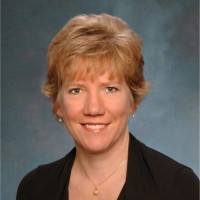 Hello again, I am LaDonna DiCamillo, the Southern California Regional Director for the California High-Speed Rail Authority (Authority). This year seems to be flying by at 200 mph and we are thrilled with the progress happening in the Southern California Region. Last newsletter, I shared that the Draft 2022 Business Plan was issued and open for comment. On April 27, 2022, the Authority Board heard your comments and approved adoption of the plan. The final document was prepared and submitted to the Legislature the first week of May.
Hello again, I am LaDonna DiCamillo, the Southern California Regional Director for the California High-Speed Rail Authority (Authority). This year seems to be flying by at 200 mph and we are thrilled with the progress happening in the Southern California Region. Last newsletter, I shared that the Draft 2022 Business Plan was issued and open for comment. On April 27, 2022, the Authority Board heard your comments and approved adoption of the plan. The final document was prepared and submitted to the Legislature the first week of May.
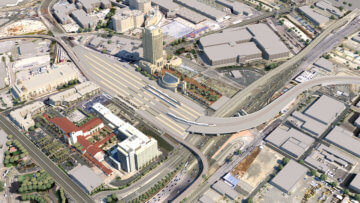 Other great news that came from the April Board Meeting was the approval of the Project Management and Funding Agreement for the Link US project that will help to transform LA Union Station into a modern transit and mobility hub. Key components include a new platform for high-speed rail, new rail communications, signals and tracks, and run-through tracks that will replace the one way/stub end tracks station, with the goal of completion of the project prior to the 2028 Olympics. When these improvements are complete, trains will no longer need to back out of the station but will instead proceed on new tracks over the 101 freeway. These exciting improvements will expand operational flexibility and capacity at Los Angeles Union Station.
Other great news that came from the April Board Meeting was the approval of the Project Management and Funding Agreement for the Link US project that will help to transform LA Union Station into a modern transit and mobility hub. Key components include a new platform for high-speed rail, new rail communications, signals and tracks, and run-through tracks that will replace the one way/stub end tracks station, with the goal of completion of the project prior to the 2028 Olympics. When these improvements are complete, trains will no longer need to back out of the station but will instead proceed on new tracks over the 101 freeway. These exciting improvements will expand operational flexibility and capacity at Los Angeles Union Station.
As we exit spring and head into the summer months, we look forward to presenting draft environmental materials for our Palmdale to Burbank project section. This will connect two key population centers in Los Angeles County with multi-modal transportation hubs in Palmdale and Burbank and run approximately 31 to 38-miles long. Please stay tuned for updates as the team works diligently to complete the documents and evaluate the possibilities for high-speed rail in the Antelope Valley and Los Angeles Basin.
Other important regional updates:
- Los Angeles to Anaheim: Draft EIR/EIS expected in 2023
- Bakersfield to Palmdale: Authority team in preliminary stages of station planning in Palmdale.
Thanks for your interest and shared excitement as we navigate through the uncharted path of introducing high-speed rail to Southern California and the rest of the state.
Rosecrans and Marquardt Groundbreaking on June 2
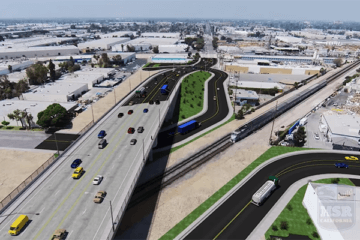 A June 2 Groundbreaking will be held on a new grade separation where construction is happening at the corner of Rosecrans and Marquardt Avenues in the city of Santa Fe Springs. The grade separation will elevate the road above the railroad right of way so vehicle and pedestrian traffic is not disrupted by trains passing through. Currently Rosecrans and Marquardt is a t-intersection with a diagonal rail crossing through the center.
A June 2 Groundbreaking will be held on a new grade separation where construction is happening at the corner of Rosecrans and Marquardt Avenues in the city of Santa Fe Springs. The grade separation will elevate the road above the railroad right of way so vehicle and pedestrian traffic is not disrupted by trains passing through. Currently Rosecrans and Marquardt is a t-intersection with a diagonal rail crossing through the center.
Benefits of grade separations include:
- Improved safety – With 22 vehicle and train crashes from 2013-2015 that resulted in six injuries and four deaths, something had to be done about this hazardous rail crossing. Creating separate paths for vehicle and pedestrian traffic has proven to be safer for some communities.
- Reduced noise – Trains use their horn as a safety signal to communicate that they will be passing through intersections. This is not necessary with grade separations because trains do not converge with local traffic.
- Decrease in traffic congestion – For many years, the Rosecrans/Marquardt intersection has been an at-grade railroad crossing. Every time a train passed through, traffic would have to wait, which led to increased backup and travel times.
- Reduction in greenhouse gas (GHG) emissions – Idling vehicles release one pound of carbon dioxide every 10 minutes. The new high-speed rail will help eliminate emissions and help reduce the number of vehicles on the road. To learn more about sustainability, visit our new Carbon Footprint Calculator.
The California High-Speed Rail Authority (Authority) has invested $77 million in Proposition 1A funds towards the grade separation at Rosecrans/Marquardt. In April 2020, the Authority Board approved a preliminary funding plan that detailed the release of the Proposition 1A funds that were appropriated by the California Legislature pursuant to Senate Bill (SB) 1029, which was signed into law in 2012.
The project is expected to be completed by 2023. To read more about other proposed grade separations in Southern California and across the state visit hsr.ca.gov/about/safety/grade-separation/ or, to watch a quick video about the project visit youtube.com/watch?v=ugsdkvHd610.
SoCal Launches Educational Outreach to Students
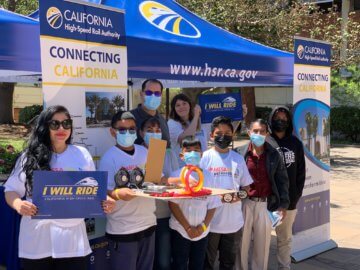 The excitement for high-speed rail is growing in Southern California and there is strong interest among students to learn more about the project sections and find out how they can get involved. To meet the demand, the California High-Speed Rail Authority (Authority) relaunched Southern California outreach efforts in early 2022 through in-person events, outreach tabling and booths, and virtual presentations. The team is expanding existing statewide efforts with educational institutions while taking a regional approach.
The excitement for high-speed rail is growing in Southern California and there is strong interest among students to learn more about the project sections and find out how they can get involved. To meet the demand, the California High-Speed Rail Authority (Authority) relaunched Southern California outreach efforts in early 2022 through in-person events, outreach tabling and booths, and virtual presentations. The team is expanding existing statewide efforts with educational institutions while taking a regional approach.
“We wanted to develop a grass roots approach in Southern California that would allow us to introduce the I Will Ride program to a wide range of students from kindergarten through college and trade schools, and within diverse organizations” said Information Officer Crystal Royval. “Our goal is to get people of all ages excited about the high-speed rail project and what it means regionally.”
The program was founded by college students from the heart of California’s Central Valley that support opportunities in transportation and mobility and the development of California’s high-speed rail system. In 2020, the Authority’s Strategic Communications team relaunched the I Will Ride effort with a stronger focus on connecting students with experts in the various areas of the project, providing information on jobs, mentorship opportunities and general information about the project. “Each region is dynamic and unique, and the excitement from students and educators to engage with the Authority on the high-speed rail project has continued to grow over the past two years,” Student Engagement and Outreach Coordinator Yaqeline Castro explained. “I am eager to take the valuable relationships we’ve established in the virtual environment and now meet students where they are to share the opportunities this project presents around the state.”
Since the relaunch of I Will Ride staff around the Authority have presented to a variety of schools and non-profits statewide in-person and virtually. To learn more about the program and to schedule a presentation for a school near you, visit hsr.ca.gov/i-will-ride.
Frequently Asked Questions
Southern California high-speed rail staff respond to many inquiries from residents, local agencies, neighborhood groups and other stakeholders. Below are answers to some of the more common questions about the program.
What kind of work is happening in Southern California on high-speed rail?
We have done a lot of work on advancing design on high-speed rail in the region. Last year, we environmentally cleared the approximately 80-mile section between Bakersfield to Palmdale, which closes the passenger rail gap between Central and Southern California. As part of that work, we have been collaborating with the City of Palmdale to develop a station plan for the Palmdale Transit Center that promotes economic development and connectivity with other modes of transportation, including connections with the Brightline West future high-speed rail service to Las Vegas.
Closer to the Los Angeles area, at the beginning of the year, we cleared the 14-mile route between Burbank and Los Angeles. This route will primarily use existing railroad right-of-way adjacent to the Los Angeles River through the cities of Burbank, Glendale and Los Angeles. High-speed rail service along this route will improve long-term air quality, decrease rail congestion and increase mobility. In addition, we are also continuing to partner with LA Metro on the Link US project, which will provide local and regional transportation benefits in the near term and prepare for future high-speed rail service.
Have any questions for the SoCal team? Please submit them to us at southern.calfornia@hsr.ca.gov.
Quarterly Newsletter Archive
- Spring 2023 All Aboard Newsletter
- Winter 2023 Quarterly Newsletter
- Fall 2022 Quarterly Newsletter
- Summer 2022 Quarterly Newsletter
- Spring 2022 Quarterly Newsletter
- Winter 2022 Quarterly Newsletter
- Fall 2021 Quarterly Newsletter
- Summer 2021 Quarterly Newsletter
- Regional Newsletter - May 2021
- Regional Newsletter - February 2021
- Regional Newsletter - November 2020
- Regional Newsletter - August 2020
- Regional Newsletter - June 2020
- Regional Newsletter - February 2020
- Regional Newsletter - November 2019
- Regional Newsletter - August 2019
The California High-Speed Rail Authority makes every effort to ensure the website and its contents meet mandated ADA requirements as per the California State mandated Web Content Accessibility Guidelines 2.0 Level AA standard. If you are looking for a particular document not located on the California High-Speed Rail Authority website, you may make a request for the document under the Public Records Act through the Public Records Act page. If you have any questions about the website or its contents, please contact the Authority at info@hsr.ca.gov.



